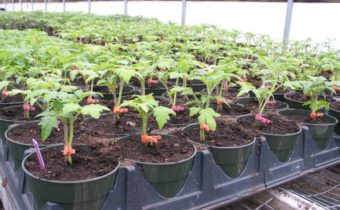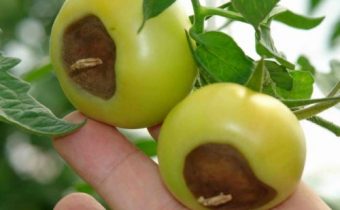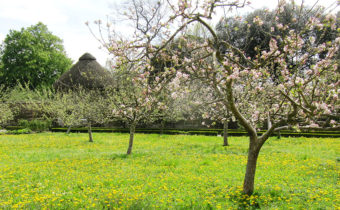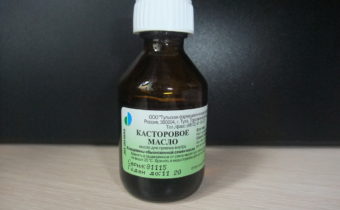Tomato "Mystery of Nature": worthy of every garden
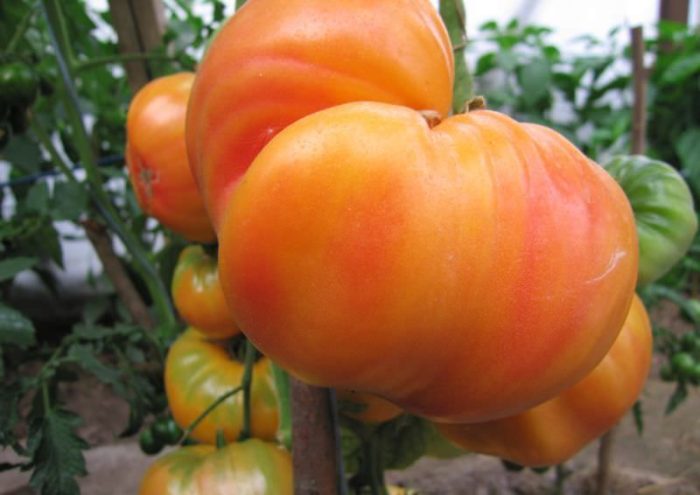
We are used to standard monochromatic tomatoes — pink, red, yellow, even brown. But sometimes truly wonderful discoveries occur - tomatoes with a completely unusual appearance - the color seems to be yellow, but sometimes pink. The same can be seen on the fetal section.
These unique features belong to the tomato "Mystery of Nature." Acquainted with the characteristics and description of the variety, you will see that it can take its rightful place in our gardens, and reviews and photos only confirm this.
The grade belongs to sredneranny, ripens in 110-115 days from the moment of shoots. It was bred for use in capricious Siberian conditions, and therefore resistant to sudden changes in temperature. Grow it in greenhouses and under film shelters.
The main thing about tomato
Powerful srednevetvisty bush form in 1-2 stems. Pasynkovanie and garter plants to the support. Leaves are light green in color. The yield of tomato "Mystery of Nature" to 17 kg per sq.m.
Tomatoes ripen gradually, 5-6 fruits are formed in each brush after 8 leaves, and have the following features:
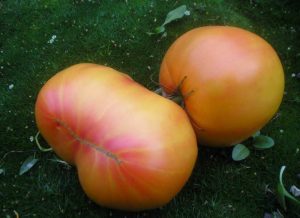
- The form is flat-round.
- The color of mature fruits is yellowish-pink, on the cut - yellow with raspberry splashes.
- Weight ranges from 200 to 700g.
- The flesh is juicy and sweet, the skin is thin.
- Used in cooking for cooking salads, various dishes, sauces and lecho.
- Have dietary properties.
Diseases and pests
Like most solanaceous plants, the tomato variety “Mystery of Nature” is susceptible to a number of diseases - mosaic, late blight, top rot and others. Sources of disease are most often infected seeds and soil, sometimes insects are carriers of infection.
For tomatoes, especially those grown in the greenhouse, preventive disease control measures are especially important. To prevent plant disease, you must:
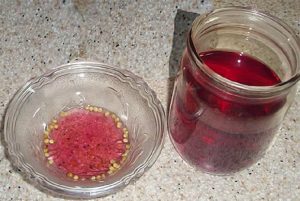
- To make preseeding processing of seeds.
- Disinfect the construction of the greenhouse and the soil inside it.
- Follow the rules of crop rotation.
- Keep the air in the greenhouse dry.
- Destroy diseased bushes.
- Treat plants with phytosporin or bordeaux mixture.
Many summer residents apply folk remedies for fighting diseases - spraying infusions of garlic, wormwood, mixed with ash.
See also: Features growing tomato "Red Guard"
Underground pests, such as beetles, wireworms can be detected when the soil is digging. A preventive measure against wireworms is autumn tillage in the greenhouse with dolomite flour or lime.
Advantages and disadvantages
According to reviews of gardeners about tomato "The Mystery of Nature", we can conclude that there is a whole army of fans of this variety.
Mostly they point out:
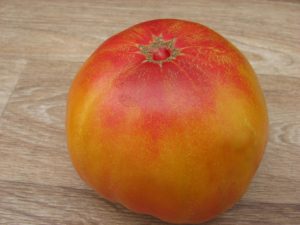
- Productivity
- Large fruit.
- Fine fruit taste.
- Resistance to temperature changes.
The disadvantages of the variety include their susceptibility to diseases, as well as the need to form and tie up not only the stem of the plant, but also his hand.
The tendency of the fruit to crack and poor transportability due to thin skin are also noted.
Features of growing
Seedling preparation
The time of planting seedlings for each region is very individual, so the gardener is easier to focus on the optimal age of tomato seedlings for planting in the ground - 55-60 days. Taking into account these terms, they start sowing seeds.
In order for the plants not to hurt during the entire growing season, a number of preparatory work should be carried out:
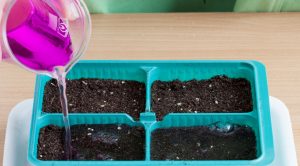
- Treat the seeds in the potassium permanganate solution for 20 min.
- Rinse in water.
- Soak in solution of trace elements or ash for 5 hours.
- Prepare land for seedlings from a mixture of garden soil, compost, ash. Disinfect with a solution of potassium permanganate or heat at high temperature.
See also: Description of the early ripe cultivar of tomatoes “Katya F1”
Shoots appear after 4-5 days, after their appearance, the boxes are exposed to light, not allowing the seedlings to be pulled out. With insufficient natural light, fluorescent lamps are used. Watering can be carried out only with warm water and very moderately (the soil should be slightly damp), in order to avoid the disease of a black leg.
With the appearance of true leaves, tomatoes are planted (dive) in separate containers or more spacious boxes at a distance of 15-20 cm between plants. Depending on the condition of the seedlings, it is fed with mineral fertilizers with trace elements (such as Malyshe) 1-2 times over the entire period.
Plants prepared for planting in the soil have a strong root system, a strong stalk and 5-6 leaves.
Caring for tomatoes in the ground
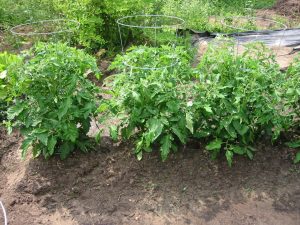 The variety "Mystery of Nature" was originally bred for the harsh climatic conditions of Siberia, but it is successfully grown in the middle lane, and not only in greenhouses, but also in the open field.
The variety "Mystery of Nature" was originally bred for the harsh climatic conditions of Siberia, but it is successfully grown in the middle lane, and not only in greenhouses, but also in the open field.
In case of spring frosts, it is advisable to stock up on additional covering material - film, spunbond, arcs, which will help protect seedlings.
For healthy plants, and, consequently, high yields, when choosing a place, plantings of previous years are taken into account. The best predecessor of tomatoes are the roots - beets, carrots, as well as cucumbers and legumes.
By planting seedlings start at the onset of sustainable heat. Plants are planted through 45-50cm, compost, ashes, and mineral fertilizers are introduced into the soil under them. Before planting the wells plentifully watered. Seedlings are recommended to plant in the evening, if the weather is hot and sunny, the plants pritenyuyut. After planting, the plants are watered again, set support.
Aftercare for plants includes:
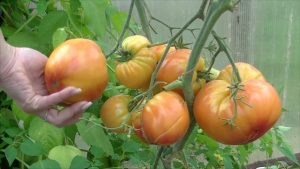
- Watering plants 1-2 times a week under the root, using special reserve tanks or drip irrigation (for irrigation use warm water). When watering avoid getting moisture on the leaves, as on hot days, moisture drops can cause burns on the plants.
- Top-dressing once in 2 weeks with green fertilizer - a solution of herbal infusion or infusion of mullein, after the formation of the fruits they are added fertilizer with mineral fertilizers. It is recommended to feed after heavy watering.
- Weeding and loosening the beds with plants.
- Soil mulching with straw, weeds, or grass to keep it moist. Mulch does not break through the weeds and allows you to keep the soil in a loose state.
- Formation of bushes v1-2 stalk, pasynkovanie. The lower leaves as the plants grow are gradually removed - 2-3 each at a time. Garter is carried out not only the stem, but also massive brushes with fruits.
- Airing the greenhouse with the help of doors and air vents, while it is necessary to avoid drafts.
- Control over the appearance of plants. When the first signs of disease appear, the diseased bushes are destroyed, and the rest are treated with phytosporin or copper-containing preparations.
See also: What does the taste of tomatoes depend on, how to get a fragrant crop?
When growing tomatoes varieties "Mystery of Nature", in the greenhouse creates favorable conditions for obtaining stretched in time of the harvest. This allows you to get tomatoes even with the onset of autumn fogs and cold snaps.
Video: Caring for tomatoes. First important steps


